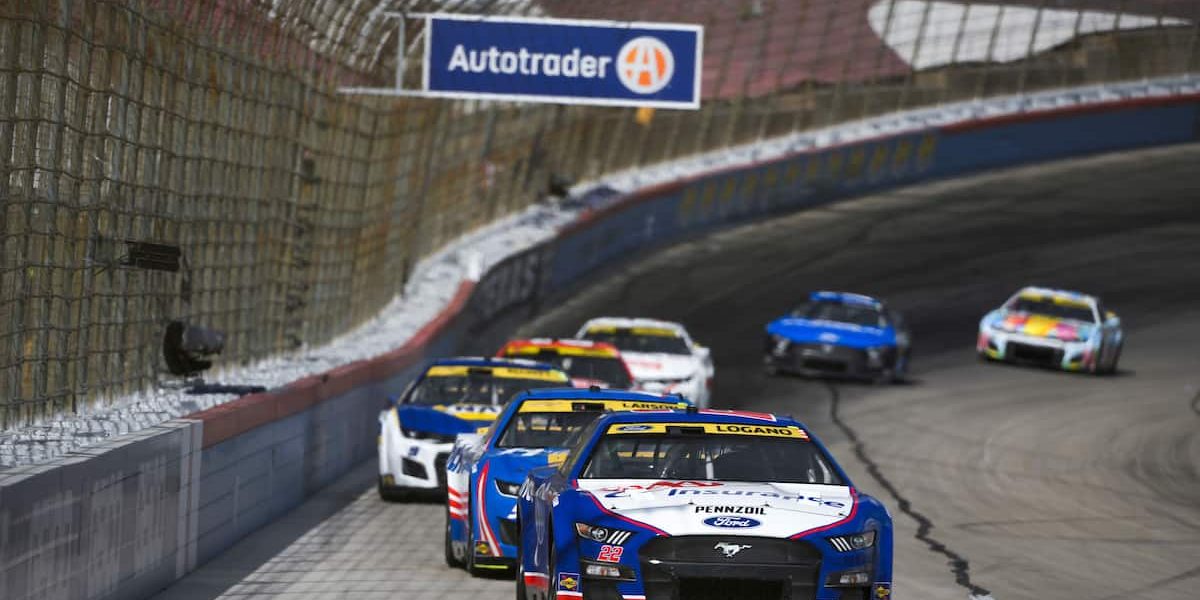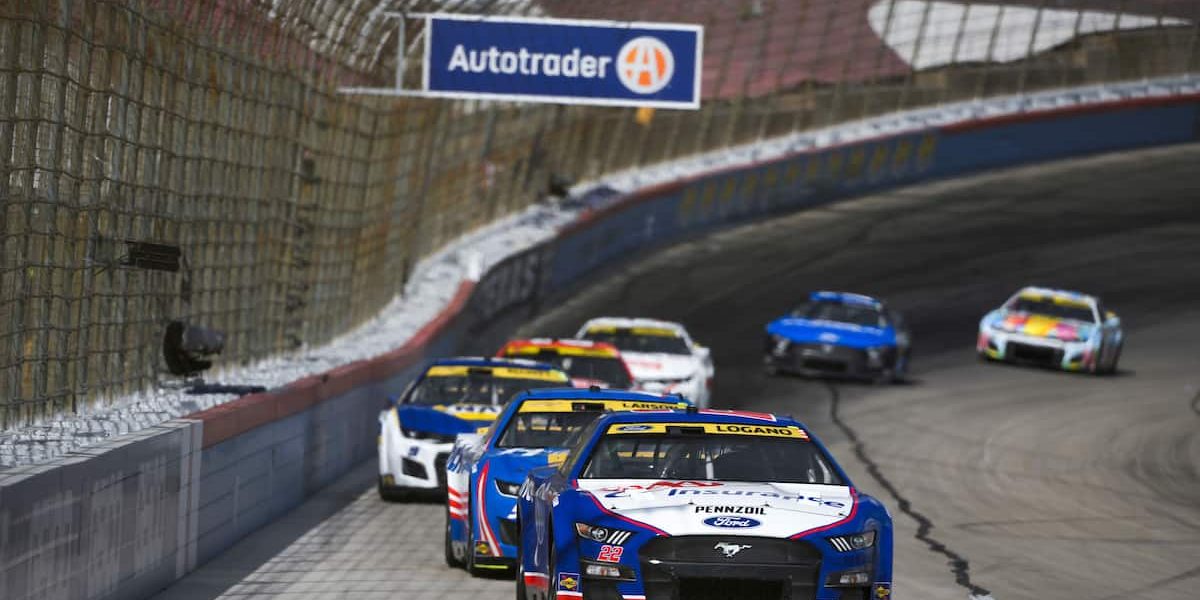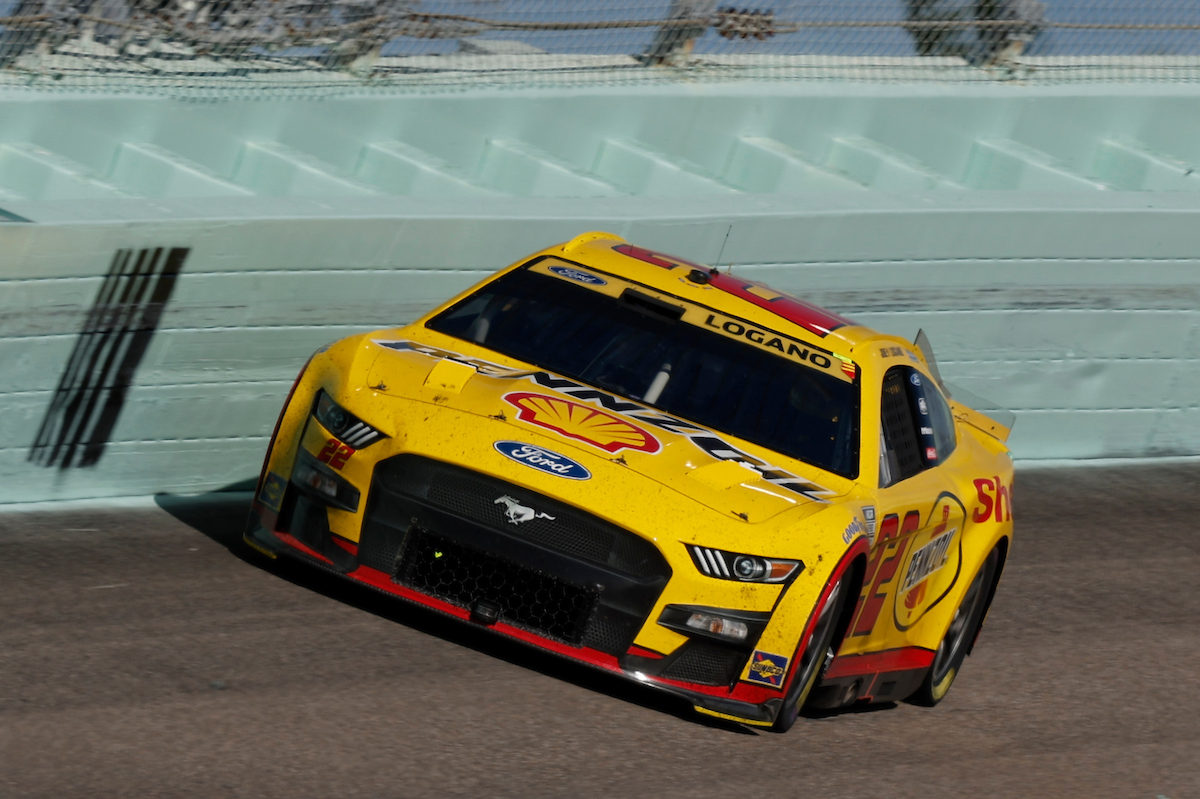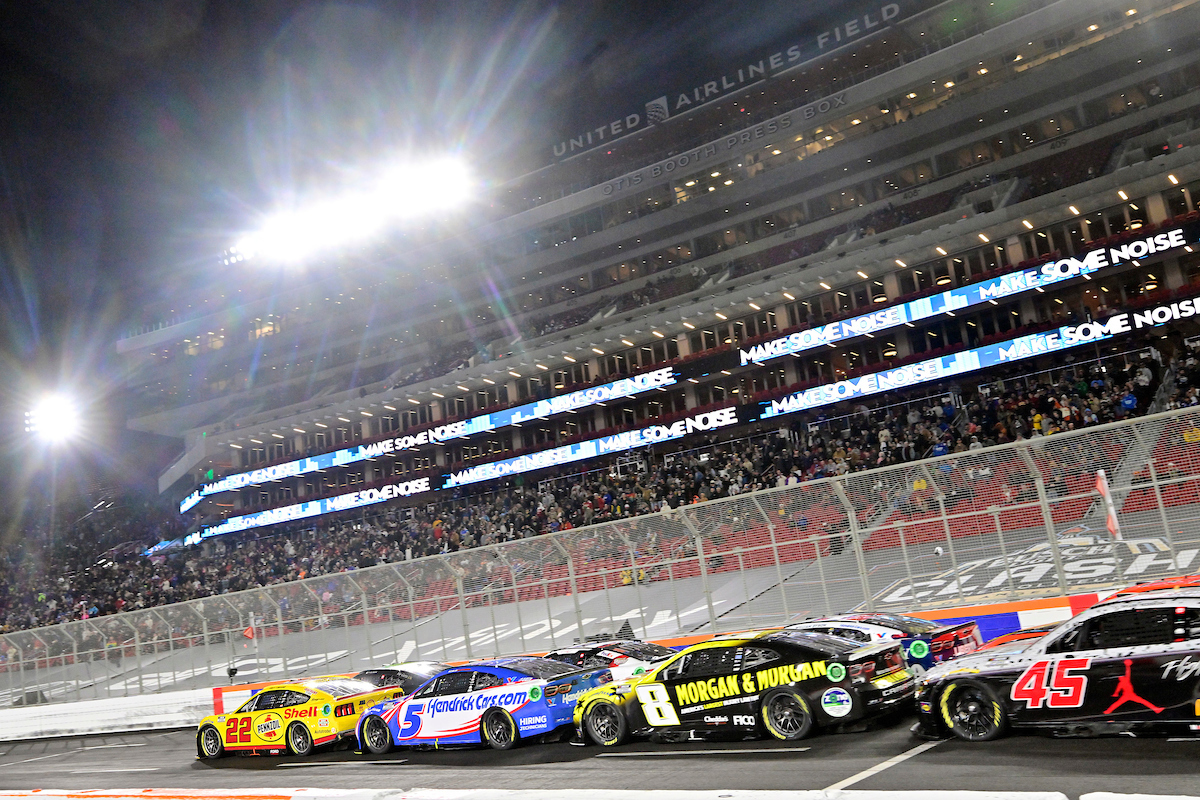How Do You Become A Nascar Driver?


Have you ever wondered, how do you become a Nascar driver? The goal of this article is to provide a comprehensive guide on how to become a NASCAR driver. It covers important aspects such as education and training, racing experience, sponsorships and funding, and physical and mental preparation. By following the steps outlined in this article, aspiring NASCAR drivers will have a better understanding of what it takes to make it in the sport and how to best prepare themselves for success. The article answers the question of how to become a NASCAR driver by providing a detailed roadmap of the steps and skills required, as well as tips and resources for achieving those goals.
Table of Contents
Education and Training
Education
Becoming a NASCAR driver requires a strong understanding of physics, engineering, and mechanics. Many aspiring drivers pursue a degree in one of these fields to gain a deeper understanding of how cars work and how to optimize their performance. Additionally, a background in math and computer science can also be beneficial for understanding and analyzing data from races.
While a formal education is not required to become a NASCAR driver, it can certainly help in terms of understanding the technical aspects of the sport and standing out to teams and sponsors. Many drivers also find that a college degree can provide a valuable backup plan in case their racing career doesn’t pan out as they had hoped.
Training
In addition to formal education, there are many training programs and schools that offer courses in motorsports. These programs provide hands-on experience working on cars and learning about the technical aspects of the sport. They can also help aspiring drivers understand the business side of racing and how to secure sponsorships and funding.
Some popular training programs include:
- NASCAR Technical Institute, which offers a two-year program that covers everything from car repair to race management
- Bob Bondurant School of High Performance Driving, which offers courses in advanced driving techniques and car control
- Richard Petty Driving Experience, which offers ride-alongs and driving experiences in real NASCAR race cars
Participating in these programs can help aspiring drivers gain valuable experience and make connections in the racing industry. It can also make them stand out to teams and sponsors when they are looking for new drivers.
Physical Training
NASCAR is a physically demanding sport and requires a high level of fitness. Drivers need to be able to handle the high G-forces and temperatures that come with racing. They also need to have good hand-eye coordination, reflexes and reaction time to handle the car with precision.
Physical training includes strength and conditioning, cardiovascular exercise, and proper nutrition. Aspiring drivers can work with personal trainers, sports physicians and sports psychologists to develop an optimal training regimen.
Mental Training
NASCAR is also a mentally demanding sport that requires a high level of focus and concentration. Drivers need to be able to handle the stress and pressure of racing, as well as make quick decisions in high-pressure situations.
Mental training includes visualization, stress management, and positive thinking. Aspiring drivers can work with sports psychologists, personal coaches and mental performance experts to develop mental strength.
Education and Training is a crucial step in becoming a NASCAR driver. A background in physics, engineering, and mechanics can help aspiring drivers understand the technical aspects of the sport. Hands-on experience and training programs can provide valuable experience and make connections in the racing industry. Physical and mental training is also essential for handling the demands of NASCAR and succeeding in the sport.
Racing Experience
Different levels of Racing
NASCAR is a highly competitive sport with different levels of racing. The path to becoming a NASCAR driver typically starts with go-karting, then moving up to local and regional racing leagues, before eventually making it to NASCAR. Each level of racing provides valuable experience and helps drivers develop their skills and understanding of the sport.
- Go-kart racing: This is the entry-level of motorsports and provides a great introduction to the basics of driving and car handling.
- Regional racing: As drivers progress, they may compete in local and regional racing leagues, such as the NASCAR Whelen All-American Series, which is the “grassroots” level of NASCAR.
- NASCAR: The pinnacle of the sport, NASCAR consists of three national series: the NASCAR Cup Series, Xfinity Series, and the Gander RV & Outdoors Truck Series.
Gaining Racing Experience
One of the most important things aspiring NASCAR drivers can do is to gain as much racing experience as possible. This can be done by competing in local and regional racing leagues, as well as amateur competitions. Many drivers also find that competing in other motorsports, such as drag racing or road racing, can provide valuable experience and help them develop different driving skills.
Another way to gain racing experience is through racing simulators. Many professional teams and drivers use simulators to practice and test new setups. Racing simulators can also be a great way for aspiring drivers to get a feel for the sport and develop their skills without having to invest in a real race car.
Networking
Networking is also important for gaining racing experience and making connections in the industry. Aspiring drivers should attend races, meet other drivers and teams, and make themselves known in the racing community. Building relationships with other drivers, teams, and sponsors can help open doors and provide opportunities for advancement.
Racing experience is an essential aspect of becoming a NASCAR driver. The different levels of racing provide valuable experience and helps drivers develop their skills and understanding of the sport. Gaining as much racing experience as possible through competitions, simulators and networking with other drivers, teams, and sponsors can help open doors and provide opportunities for advancement in the sport.
Sponsorships and Funding
Importance of Sponsorships
Sponsorships are a crucial aspect of NASCAR as they provide a significant source of revenue for drivers and teams. Sponsorships can range from small personal sponsorships to large team sponsorships, and they can come from a variety of sources, including companies, individuals, and government organizations.
Having a strong sponsorship can make the difference between a successful racing career and one that struggles to get off the ground. Sponsorships provide not only funding but also valuable resources and exposure for drivers. Some examples of NASCAR’s top sponsor are:
- Coca-Cola, one of the biggest sponsors in NASCAR, providing funding for multiple teams and drivers.
- Nationwide, another major sponsor in the sport, providing funding for multiple teams and drivers.
Types of Sponsorships
There are several types of sponsorships available to NASCAR drivers, each with its own set of benefits and drawbacks.
- Personal Sponsorships: These are sponsorships that are secured by the driver rather than the team. Personal sponsorships can provide a driver with additional funding and resources, but they also come with more responsibilities, such as representing the sponsor at events and promoting their products.
- Team Sponsorships: These sponsorships are secured by the team rather than the driver. Team sponsorships can provide a driver with a more stable source of funding and resources, but they also come with less control over how the sponsorship is used and less direct exposure.
- Primary Sponsorship: This is the most comprehensive form of sponsorship, providing the most funding and resources, and the most control over how the sponsorship is used. Primary sponsors are usually featured prominently on the car and have a large presence at events.
Securing Sponsorships
Securing sponsorships can be a challenging task for aspiring NASCAR drivers. It requires a professional racing resume, a polished personal image, and a good understanding of the industry. Some tips for securing sponsorships include:
- Networking: Building relationships with other drivers, teams, and sponsors can help open doors and provide opportunities for sponsorship.
- Creating a professional racing resume: This should include information about the driver’s racing experience, achievements, and goals.
- Building a personal brand: Drivers should focus on building a personal brand that aligns with the values and goals of potential sponsors.
Sponsorships and Funding are an essential aspect of becoming a NASCAR driver. Sponsorships can provide significant funding and resources for drivers and teams, as well as valuable exposure for drivers. There are different types of sponsorships available and securing them requires a professional racing resume, a polished personal image and a good understanding of the industry. Networking and building a personal brand can also help open doors and provide opportunities for sponsorship.
Physical and Mental Preparation
Physical Preparation
NASCAR is a physically demanding sport that requires a high level of fitness. Drivers need to be able to handle the high G-forces and temperatures that come with racing, as well as the long hours spent in the car. They also need to have good hand-eye coordination, reflexes and reaction time to handle the car with precision.
Physical training includes strength and conditioning, cardiovascular exercise, and proper nutrition. Aspiring drivers can work with personal trainers, sports physicians and sports psychologists to develop an optimal training regimen. Some examples of physical training include:
- Strength Training: Drivers need to have a strong upper body to handle the steering wheel and control the car. Weightlifting and resistance training are important to build upper body strength.
- Cardiovascular Training: Drivers need to have a high level of cardiovascular fitness to handle the high temperatures and G-forces of racing. Running, cycling and swimming are good options for cardiovascular training.
- Nutrition: Drivers need to eat a healthy diet that provides the necessary nutrients to maintain energy levels throughout the race. A diet high in protein, carbohydrates, and healthy fats is recommended.
Mental Preparation
NASCAR is also a mentally demanding sport that requires a high level of focus and concentration. Drivers need to be able to handle the stress and pressure of racing, as well as make quick decisions in high-pressure situations.
Mental training includes visualization, stress management, and positive thinking. Aspiring drivers can work with sports psychologists, personal coaches and mental performance experts to develop mental strength. Some examples of mental training include:
- Visualization: Drivers can practice visualizing themselves successfully navigating through a race. This can help them prepare mentally and build confidence.
- Stress Management: Drivers need to be able to manage stress and maintain a clear mind during the race. Techniques such as deep breathing, meditation and yoga can help.
- Positive Thinking: Drivers need to have a positive attitude and believe in themselves. Positive thinking can help drivers stay focused and motivated during the race.
Physical and Mental Preparation are essential for becoming a NASCAR driver. Physical preparation includes strength and conditioning, cardiovascular exercise, and proper nutrition. Mental preparation includes visualization, stress management, and positive thinking. Working with personal trainers, sports physicians, sports psychologists, personal coaches, and mental performance experts can help aspiring drivers develop the necessary skills and mindset to succeed in the sport.
How Do You Become A Nascar Driver? – Key Takeaways
In conclusion, becoming a NASCAR driver is a challenging but achievable goal that requires a combination of education, training, racing experience, sponsorship and funding, and physical and mental preparation. A strong understanding of physics, engineering, and mechanics can help aspiring drivers understand the technical aspects of the sport. Hands-on experience and training programs can provide valuable experience and make connections in the racing industry. Gaining as much racing experience as possible through competitions and networking with other drivers, teams, and sponsors can help open doors and provide opportunities for advancement in the sport. Securing sponsorships also play a key role in the funding and resources, as well as exposure for drivers.
Physical and mental preparation is also essential for handling the demands of NASCAR and succeeding in the sport. Physical preparation includes strength and conditioning, cardiovascular exercise, and proper nutrition. Mental preparation includes visualization, stress management, and positive thinking. Working with personal trainers, sports physicians, sports psychologists, personal coaches, and mental performance experts can help aspiring drivers develop the necessary skills and mindset to succeed in the sport.
While becoming a NASCAR driver requires a significant amount of hard work, dedication, and perseverance, the rewards are well worth it. The thrill of racing at high speeds, the excitement of competing in front of thousands of fans, and the opportunity to make a living doing something you love are all part of the NASCAR experience. With the right education, training, experience, and support, anyone can pursue their dream of becoming a NASCAR driver. Remember to never give up on your dreams and keep working hard towards your goals.
How Do You Become A Nascar Driver? – FAQs
What education is required to become a NASCAR driver?
While a formal education is not required to become a NASCAR driver, it can certainly help in terms of understanding the technical aspects of the sport and standing out to teams and sponsors. Many aspiring drivers pursue a degree in physics, engineering, or mechanics to gain a deeper understanding of how cars work and how to optimize their performance. Additionally, a background in math and computer science can also be beneficial for understanding and analyzing data from races.
How can I gain racing experience?
The most important thing aspiring NASCAR drivers can do is to gain as much racing experience as possible. This can be done by competing in local and regional racing leagues, as well as amateur competitions. Many drivers also find that competing in other motorsports, such as drag racing or road racing, can provide valuable experience and help them develop different driving skills. Additionally, racing simulators can be a great way for aspiring drivers to get a feel for the sport and develop their skills without having to invest in a real race car.
What kind of sponsorships are available for NASCAR drivers?
There are several types of sponsorships available to NASCAR drivers, including personal sponsorships, team sponsorships, and primary sponsorships. Personal sponsorships are secured by the driver rather than the team and provide additional funding and resources, but also come with more responsibilities. Team sponsorships are secured by the team rather than the driver and provide a more stable source of funding and resources, but also come with less control over how the sponsorship is used. Primary sponsorships are the most comprehensive form of sponsorship, providing the most funding and resources, and the most control over how the sponsorship is used.
What kind of physical and mental preparation is required for NASCAR?
NASCAR is a physically demanding sport that requires a high level of fitness. Drivers need to be able to handle the high G-forces and temperatures that come with racing, as well as the long hours spent in the car. They also need to have good hand-eye coordination, reflexes and reaction time to handle the car with precision. Physical training includes strength and conditioning, cardiovascular exercise, and proper nutrition. Mentally, drivers need to be able to handle the stress and pressure of racing, as well as make quick decisions in high-pressure situations. Mental preparation includes visualization, stress management, and positive thinking.
Is there an age limit for becoming a NASCAR driver?
There is no age limit for becoming a NASCAR driver, but it is recommended that aspiring drivers start competing at a young age to gain as much experience as possible. Many drivers start competing in go-kart racing at a young age and work their way up through the ranks. However, many successful NASCAR drivers started competing at an older age and still managed to achieve success in the sport.
Not ready to become a driver but want to be involved in Nascar? Check out how much Nascar pit crews make…










